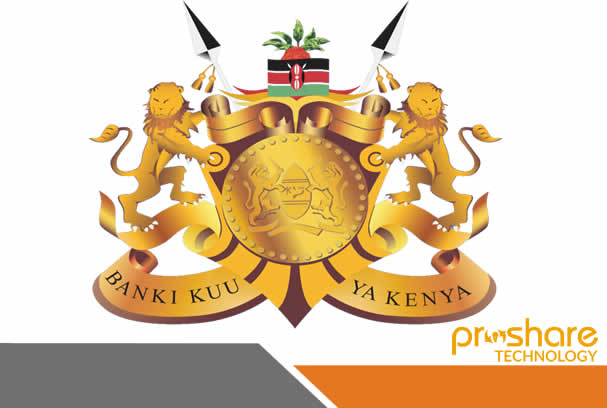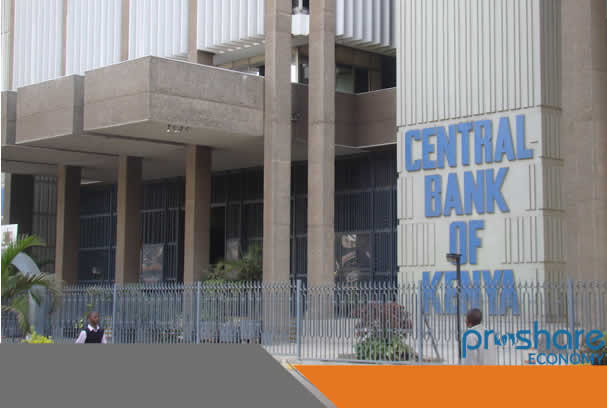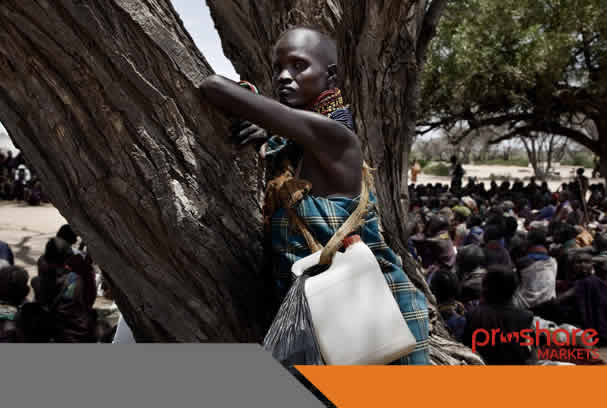Overview
- A challenging Eurobond issuance environment and recent tightness in domestic debt markets are raising Kenya's medium-term fiscal and external refinancing risks.
- Meanwhile, pressure in the interbank foreign exchange market has exacerbated U.S. dollar shortages and stoked currency depreciation, further inflating the stock of external debt in local currency terms.
- Our base-case scenario assumes Kenya's 2023 financing requirements are largely in place, while the new administration's commitment to reducing its net borrowing requirement via a comprehensive fiscal consolidation agenda should ease funding pressures.
- Nevertheless, risks to our base-case scenario are weighted to the downside, given Kenya's sizable external financing needs and uncertain market conditions.
- We therefore revised our outlook to negative from stable and affirmed our 'B/B' local and foreign currency ratings on Kenya.
Rating Action
On Feb. 24, 2023, S&P Global Ratings revised its outlook on Kenya to negative from stable. At the same time, we affirmed our 'B/B' long- and short-term foreign and local currency sovereign credit ratings on the country. The transfer and convertibility assessment remains 'B+'.
Outlook
The negative outlook reflects heightened risks to Kenya's debt servicing capacity due to constrained international market access and recent undersubscribed domestic bond issuances.
Downside scenario
We could lower the ratings over the next 12 months if Kenya's access to external funding were curtailed, resulting in external financing shortfalls or a sustained decline in foreign exchange (FX) reserves. We could also lower the ratings if we perceived Kenya's economic growth prospects or fiscal metrics had weakened significantly relative to historical norms.
Upside scenario
We could revise the outlook to stable if Kenya's external and domestic financing pressures prove to be contained with evidence of commitment to fiscal consolidation, while economic growth and institutional mechanisms remain robust.
Rationale
Constrained external financing led to Kenya suspending plans to tap international capital markets in 2022, prompting the country to draw more extensively on its FX reserves to meet its external debt repayments. Our base-case scenario assumes that Kenya will meet its financing requirements for fiscal 2023 (year ending June 30), but risks remain given relatively high foreign debt service obligations in fiscal 2024 (including a $2 billion Eurobond maturing in June 2024) against a backdrop of still-difficult issuance conditions. Recent tightness in the interbank FX market has also reduced FX liquidity and accelerated currency depreciation, driving up the cost of external interest in local currency terms.
In the domestic bond market, the government initiated a voluntary switch transaction in January 2023 that invited select market participants to convert Kenyan shilling (KSH) 88 billion worth of maturing T-bills and T-bonds into a tax-free, six-year infrastructure bond. We understand that 80% of investors participated in the exchange, and the nonconverted redemptions were settled on time and in full. We did not consider the debt liability management exercise a distressed exchange (owing to its opportunistic nature and the new instrument's higher yield), and understand it was undertaken to manage short-term refinancing risks by lengthening the maturity profile of the government's domestic debt. This has proven challenging against investors' recent oversubscriptions in short-term T-bills at the expense of longer-dated securities, as seen by the government reaching only 30% of its target in its latest February bond auction, with implications for domestic debt-servicing costs. Positively, the average time to maturity of T-bonds increased to 9.1 years in 2022, compared with 6.3 years in 2019.
In October 2022, Kenya's National Treasury pledged to step in to repay $525 million of guaranteed debt that Kenyan Airways (KQ) defaulted on to Export-Import Bank of the U.S. (EXIM; guarantor of the Private Export Funding Corp.). Burdened by legacy solvency issues, KQ failed to honor its debt repayment obligations on a 10-year, $841 million loan issued in 2017 to purchase aircrafts and an engine. The Kenyan cabinet recently granted approval to clear the arrears outstanding to EXIM, while discussions are ongoing to novate the state-guaranteed debt. We classify EXIM as a noncommercial entity and this does not constitute a default as per our criteria. In a bid to reduce contingent liabilities to the state, the president has expressed his intention to sell the government's entire stake (48.9%) in the airline.
Since assuming office in September 2022, President William Ruto's administration has affirmed his commitment to fiscal discipline by targeting a lower overall budget deficit of 5.7% of GDP in the current fiscal year (compared with 6.2% under the original budget). To this end, the new administration has eliminated gasoline and electricity subsidies and reduced contingent liabilities associated with Kenya Power, while accelerating efforts to strengthen tax administration, mobilization, and compliance to boost total revenue. We expect these measures will help reduce Kenya's high net borrowing requirement, although fiscal slippage could arise in the form of ongoing drought relief, contingent liabilities tied to KQ, potential litigation risk from project cancellations, and carryovers of unbudgeted expenditure from the previous administration (amounting to about 1.9% of GDP).
Our ratings on Kenya are constrained by the country's still relatively low GDP per capita (despite strong GDP growth), high fiscal deficits and debt stocks, and a history of ethnic loyalties superseding national ones, sometimes leading to social tensions. The ratings are supported by Kenya's track record of strong GDP growth (allowing it to rise from low-income to middle-income status), dynamic private sector, and diversified economy, including its large and diversified agricultural and services sectors relative to peers', which should help cushion its economy and support a rebound. Kenya also benefits from flexible monetary settings, supported by its relatively deep and dynamic domestic capital markets, with the market capitalization of its local currency debt at over 25% of GDP, as well as a developed institutional framework relative to peers' at the rating level.
Institutional and economic profile: Fiscal austerity measures will help contain debt levels but could dampen medium-term growth prospects
- Kenya's economy remains on a relatively strong footing, with robust growth supported by the country's dynamic services-led private sector.
- The new administration's economic policy objective is to dismantle red tape while advancing a bottom-up economic agenda that provides greater opportunities to the informal and small business economy, prioritizing them over infrastructure projects.
- Kenya's institutions benefit from stronger checks and balances than most African peers, but ethnic loyalties remain strong and often supersede national ones, which has occasionally led to social tensions.
The August 2022 presidential election saw former Deputy President Ruto declared the winner in a close race against former Prime Minister Raila Odinga, who subsequently contested the election's outcome on grounds of alleged fraud and voter suppression. A testament to Kenya's relatively robust institutions, the supreme court upheld Mr. Ruto's victory in early September, citing no significant evidence of irregularities. Observers hailed the election as a significant milestone for Kenya and wider Africa, boasting a highly transparent online vote-tallying process and limited violence.
Since launching his presidential campaign, Mr. Ruto has pledged to cut red tape and move from a top-down to a grassroots bottom-up system to provide more opportunities for the large informal and small business economies. In this spirit, Mr. Ruto's coalition launched a targeted loan scheme dubbed the "Hustler Fund" to limit expensive and predatory lending to small and medium enterprises (SMEs) and extend microfinance to small businesses and individuals. While remaining focused on boosting investment in five key sectors--agriculture, SMEs, housing, health care, and the creative economy--Mr. Ruto has also campaigned to sharply contain the fiscal deficit. Within his first week in office, petrol and diesel subsidies were lowered and passthrough of variable costs to electricity consumers restored.
Kenya's real GDP growth slowed to 4.7% in third-quarter 2022, compared with 9.3% in third-quarter 2021, due to statistical base effects, higher inflation, and general uncertainty surrounding the electoral outcome. Ongoing drought conditions also dragged on growth, leading to a fourth consecutive quarter contraction in the agricultural sector. Nevertheless, we expect GDP growth will average 5.5% over 2023-2026, supported by Kenya's longstanding market-oriented liberal economic policies, strong services growth, and increased intra-regional trade, as well as the expansion of the East African Community trading bloc to include the Democratic Republic of the Congo (DRC). Still, ongoing austerity measures resulting in curtailed funding for infrastructure projects could weigh on medium-term growth prospects.
Flexibility and performance profile: Rising external and fiscal vulnerabilities are tied to higher debt service repayments and financing constraints
- Fiscal deficits are projected to narrow, averaging 5.7% over fiscal years 2023-2026 under the new administration's consolidation plan.
- Despite strong access to concessional funding, financing pressures could continue to build amid constrained international market access and recent undersubscription of domestic bond issuances.
- Recent tightness in interbank FX markets has magnified liquidity and currency pressures.
In early February 2023, President Ruto's administration submitted a supplementary budget to parliament, further cutting the fiscal deficit in fiscal 2023 to 5.7% of GDP, from 6.2% originally. Draft documents reveal a marginal increase in overall expenditure to KSH3.37 trillion (from KSH3.36 trillion), reflecting higher provisions for ongoing drought relief, fertilizer subsidies, the Hustler Fund, and carryovers of unbudgeted security, subsidy, and infrastructure spending from the previous administration (estimated at 1.9% of GDP). Offsetting these are envisaged cuts to nonpriority recurrent spending and a rationalization of stalled infrastructure projects, alongside a stronger tax administration and compliance measures expected to boost revenue to KSH2.53 trillion (from KSH2.46 trillion). The government aims to finance the fiscal 2023 deficit with 3.0% of GDP equivalent of domestic funding (from 4.2%), and 2.7% via multilateral and overseas sources (from 2.0%).
Preliminary data for the first six months of fiscal 2023 shows a minor shortfall in revenue and expenditure relative to revised targets. Cumulative revenue amounted to KSH1.11 trillion (compared with a target of KSH1.16 trillion) on lower ordinary revenue collection tied to the election-uncertainty growth slowdown, while expenditure stood at KSH1.34 trillion (compared with KSH1.45 trillion) due to below-target recurrent and development spending.
Our base-case scenario assumes fiscal consolidation efforts will narrow Kenya's budget deficit to an average of 5.7% over fiscal years 2023-2026, financed chiefly through concessional external financing and shorter-dated domestic instruments. Risks to the fiscal forecasts include lower-than-projected growth tied to austerity measures, rising emergency spending, increasing contingent liabilities to KQ, and last-minute spending commitments by the previous administration.
About half of the government's stock of debt is external--foreign currency debt--exposing Kenya to external financing and FX risks. Nevertheless, Kenya still borrows about half of its external debt from multilateral and bilateral lenders on concessional terms with long tenors and we expect this to remain a stable source of funding. The external debt stock includes multilateral debt (46.3% of total external debt), commercial debt (26.8%), bilateral debt (26.6%), and suppliers' credit (0.3%). Against a backdrop of rising global rates and still-elevated inflation, debt-servicing costs are projected to increase and total debt servicing will average a relatively high 30% of general government revenue over fiscal years 2023-2026. This, combined with sustained currency depreciation, will contribute to a slight increase in the stock of general government debt, net of liquid assets, to 64% of GDP by 2026.
Kenya reached a staff-level agreement with the IMF in February 2021 for a 38-month program worth $2.4 billion. To date, the country has received the first four tranches (totalling $1.6 billion), including the most recent disbursement of $447 million in December 2022, which featured a $216 million augmentation of access for fiscal financing and FX support purposes. Assisted by the IMF, the government will continue to try widening its tax net and increase revenue as a percentage of GDP, addressing generous tax-exemption schemes, while controlling noncore expenditure and state-owned-enterprise debt. The IMF program has also helped catalyze further funding from the World Bank and other multilateral and bilateral lenders.
Difficult market issuance conditions challenged Kenya's external financing plans before fiscal year-end 2022, with a planned €1 billion Eurobond issuance delayed due to prohibitively expensive market rates and election-related procedural delays. We understand the government has largely met its fiscal external financing needs for fiscal 2023 and is finalizing a $600 million syndicated loan agreement with a consortium of foreign banks (with a potential $400 million augmentation of access), while securing concessional funding from the IMF ($900 million), World Bank ($750 million), and Eastern and Southern African Trade and Development Bank ($300 million). Should market conditions remain unfavorable, we expect the government will meet its fiscal 2024 external debt obligations through official concessional and other commercial sources, including further syndicated loans.
Preliminary data suggests Kenya's current account deficit (CAD) slightly narrowed to 4.9% of GDP in 2022, compared with 5.5% in 2021, on supportive tea and manufacturing exports, a relative rebound in international tourism, and record-high remittance inflows. A sharp rise in the import bill due to high energy prices and global inflation on non-oil imports was also partially offset by a reduction in capital imports tied to the completion of major infrastructure projects such as the Nairobi Expressway.
On the financial account, the postponed Eurobond issuance contributed to a sustained fall in the Central Bank of Kenya's (CBK's) stock of FX reserves to $6.9 billion in February 2023, from a peak of $9.5 billion at end-2021. Foreign currency inflows are largely generated by remittances; exports of tea, horticultural, and floricultural products; and tourism, alongside IMF and other multilateral and bilateral financing.
We forecast the CAD will gradually narrow to 4.7% of GDP by 2026, in line with our assumptions of easing energy prices and recovering tourism receipts. We estimate that Kenya's external debt, net of liquid public- and financial-sector external assets, will average about 310% of current account receipts over 2023-2026, from an average of 180% in 2015-2019, among the highest of rated sovereigns globally. We also project gross external financing needs (payments to nonresidents), our key liquidity measure, to average 201% of current account receipts plus usable reserves over 2023-2026, reflecting elevated foreign debt service repayments tied to maturing Eurobonds and stable FX reserves of about $6.9 billion (covering three-to-four months of current account payments). Still, we note Kenya's external debt service to exports ratio remains contained at 23.6% in 2022.
Significant inflationary pressure subsided for three consecutive months to 9% year-on-year in January 2023 on a relative moderation of food, fuel, and electricity prices. Expectations of further easing of domestic inflation prompted the CBK to hold its benchmark interest rate at 8.75% in January 2023, following a cumulative 175 basis-point hike over 2022. We forecast inflation will average 6.2% over 2023-2026, within the CBK's target range of 2.5%-7.5%, supported by tempering global energy prices and the introduction of a temporary waiver of import duties on select agricultural products.
Kenya's largely floating exchange rate has historically acted as a shock absorber in periods of stress, with the CBK only intervening in FX markets to smooth out significant exchange-rate volatility. We understand liquidity in the interbank FX market has been tight since the onset of the Russia-Ukraine conflict in February 2022, shifting FX transactions to the bank-client market at a more depreciated rate. We expect these FX pressures, which have limited price discovery by curtailing the volume of transactions in the interbank market, will gradually reverse in line with reduced global financial market volatility and greater exchange rate flexibility. In 2022, the shilling depreciated 9% against the U.S. dollar on global factors and declining FX reserves, against an average of 5% historically.
A recovery in economic activity in 2022 led to strong double-digit expansion in domestic credit. We expect this momentum will continue through 2023, as household lending ramps up alongside the recent introduction of the Hustler Fund (which will extend KSH50 billion of microcredit to Kenyan citizens every year until 2026). Nonperforming loans have not sharply increased since the CBK ended loan forbearance measures in June 2021, but we forecast them to remain elevated at about 12% in 2023. Overall, we expect the banking sector will remain well capitalized, assisted by strong profitability.
 Lagos, NG • GMT +1
Lagos, NG • GMT +1











 180 views
180 views















 Sponsored Ad
Sponsored Ad
 Advertise with Us
Advertise with Us









